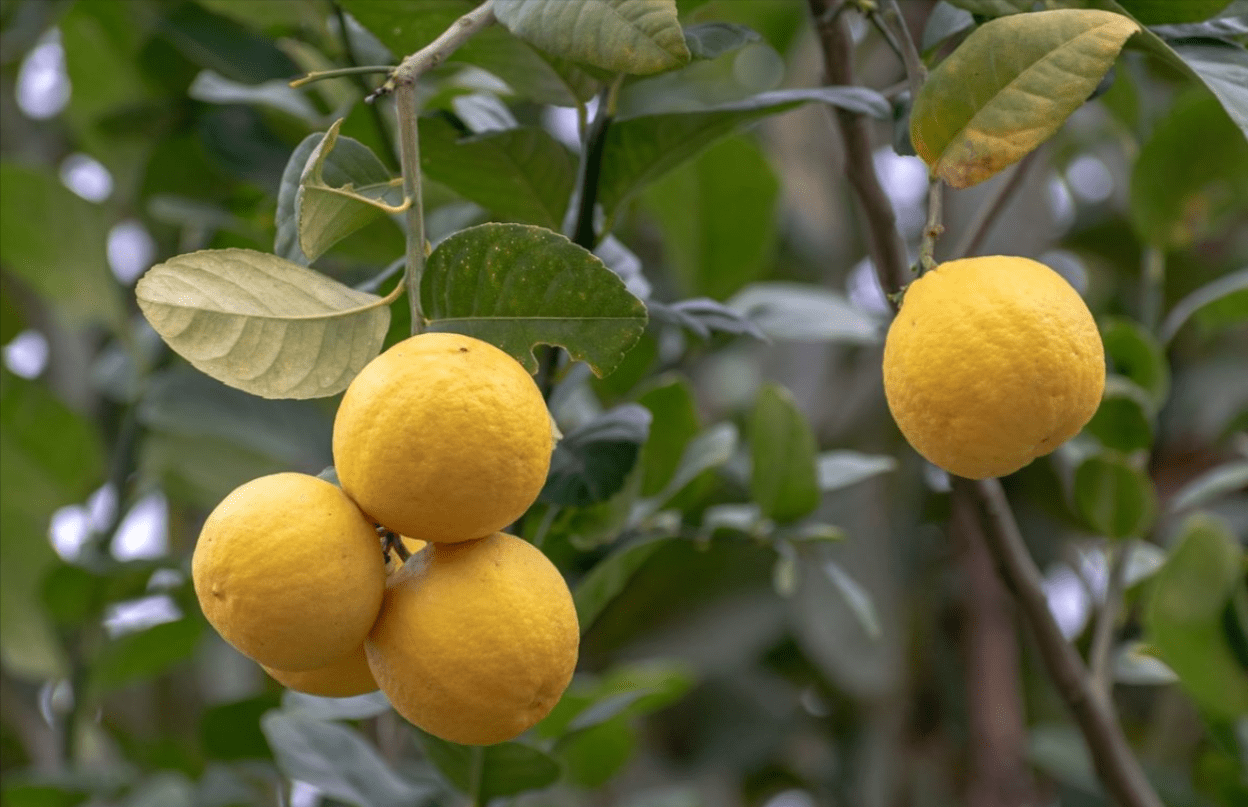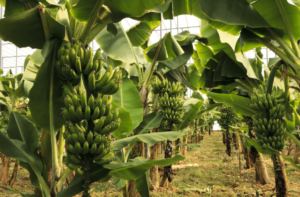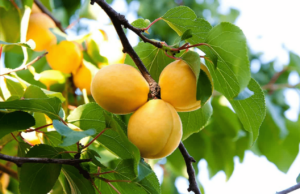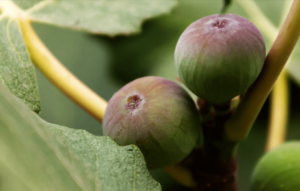How to Successfully Plant and Maintain Healthy Yuzu Trees
With a tangy and aromatic flavor, yuzu Trees fruits bring a distinctive zest to sauces and dressings. Learn from plant specialist Briana Yablonski how to cultivate this resilient citrus in your own garden.
Vibrant yellow yuzu fruits dangle gracefully from verdant branches adorned with lively green foliage, creating a charming visual. The sun’s gentle rays highlight their citrusy splendor.
Although you’re likely familiar with lemons, oranges, and limes, many other citrus varieties can be grown at home. Yuzu is one such example. These hardy citrus trees withstand temperatures that would be fatal to many other citrus species, making them a valuable addition to year-round gardens.
With proper care, yuzu trees will eventually bear round yellow or orange fruits that resemble knobby mandarins. While these fruits are not ideal for eating fresh due to their sourness, their tangy juice and aromatic zest are perfect for enhancing marinades, cocktails, and dressings.
If you’re interested in cultivating yuzu at home, you’re in luck! With the right conditions and a bit of patience, you can look forward to enjoying fresh yuzu fruits in a few years.
What Is Yuzu?
Yuzu shares similarities with various citrus plants but has its own distinct traits. If you’re considering adding a yuzu to your collection, here’s what to expect.
Characteristics
A close-up of a yuzu fruit among green leaves reveals its textured skin. Additional yuzu fruits in the background enhance the citrusy scene, highlighting their freshness and abundance.
Yuzu trees produce small green fruits that ripen to a vibrant yellow or light orange. While yuzu plants are evergreen perennials, their ultimate height depends on the rootstock used. Trees on standard rootstocks can reach up to 20 feet, while those on dwarf rootstocks typically remain around five feet tall.
Yuzu plants feature deep green leaves with elongated petioles (the stems of the leaves). These petioles resemble small leaves themselves, creating the appearance of two conjoined leaves.
These plants require several years to mature and won’t bloom during their first year. Once mature, they produce small, white flowers in late winter or spring. These blossoms have five white petals and yellow stamens, similar to other citrus flowers.
After successful pollination, small green fruits develop at the center of the flowers. Over time, the fruits grow to about three inches in diameter, changing color to deep yellow or light orange when they are ready to harvest in the winter.
Native Area
Ripe yuzu fruits hang gracefully from the branches, their vivid colors hinting at their citrusy flavor. In the background, a rich tapestry of leaves creates a lush contrast against the striking fruits.
Yuzu is a hybrid citrus fruit that originated in Central China, near Tibet. It is not a distinct species but rather an F1 hybrid of the mandarin orange and the Ichang papeda.
Although yuzu was first cultivated in China, it was introduced to Japan towards the end of the first millennium. Since then, it has become a popular and widely grown fruit across Japan.
Planting
Bringing a citrus plant like yuzu into your home can be as thrilling as unwrapping a gift on Christmas morning. If you share this excitement, it’s easy to get carried away and overlook some crucial preparation. Take a moment to breathe and consider these important tips.
Planting In-Ground vs. In Containers
A small yuzu tree with ripe yellow fruits gleams in the afternoon sunlight, set against a backdrop of additional yuzu trees and a serene mountain view.
The best planting location for yuzu depends on your USDA hardiness zone. In zones nine and above, yuzu can thrive outdoors year-round, whether planted directly in the ground or kept in a pot that stays outside.
For those in zones eight or lower, winter temperatures may be too harsh for yuzu to survive outside. In this case, it’s best to plant yuzu in a container that can be brought indoors during colder weather.
While any container material will work, large, lightweight containers are preferable for ease of movement. Small seedlings can start in one, two, or three-gallon pots, but as the tree grows, a five-gallon or ten-gallon container will be more suitable. Ensure the container has drainage holes at the bottom to prevent waterlogging.
Selecting a Yuzu Plant
Two vibrant yellow yuzu fruits, their bumpy texture adding a lively touch, rest amid lush green foliage, creating a scene full of freshness and natural beauty.
When looking to add a yuzu plant to your collection, purchasing a small plant is your best bet. While some local nurseries might carry this rare citrus, it’s often easier to find one online from a reputable supplier.
Yuzu plants are resilient but can’t handle temperatures below 20°F (-7°C). Therefore, avoid ordering during the dead of winter when the cold could harm the plant during shipping. Spring is an ideal time to order—after temperatures have warmed but before nurseries run out of stock.
Typically, nurseries offer yuzu seedlings in either one-gallon or three-gallon containers. Both sizes are acceptable, but plants in three-gallon pots will be more mature and thus more likely to flower and fruit sooner. For the best results, choose a larger container.
Consider the rootstock when selecting your plant. Rootstock affects the plant’s final height—dwarf rootstocks will keep the yuzu tree between five and ten feet tall, while standard rootstocks can grow up to 20 feet. For container growth, opt for a dwarf or semi-dwarf rootstock.
Yuzu plants are self-fertile, meaning you only need one plant for successful pollination and fruit production.
How to Grow Yuzu
Once you have your yuzu plant, proper care will ensure it thrives. Here are some key tips.
Light
A yuzu tree bathed in sunlight with its vibrant leaves and bright fruits contrasting beautifully against the foliage.
Yuzu plants need plenty of bright light, ideally at least six hours of direct sunlight daily. Whether planted in the ground or a container, ensure it receives this amount of light. When moving your yuzu indoors for the winter, place it near a south-facing window to maximize light exposure. If your home is dim, consider using a grow light to supplement natural light.
Water
A yuzu fruit nestled among green leaves, glistening with water droplets, highlighting its fresh and zesty nature.
Yuzu plants prefer slightly moist soil but can handle brief dry periods. The watering frequency depends on temperature, humidity, and plant size, but generally, watering deeply once a week from spring through early fall is ideal. In winter, reduce watering to about once every two weeks for indoor plants. Be cautious of overwatering during the colder months; it’s better to err on the side of underwatering.
Soil
A well-draining potting mix, featuring a blend of nutrient-rich soil components, ideal for healthy plant growth.
Ensure your yuzu plant has well-drained soil. If planting in the ground, improve drainage by loosening the soil and mixing in pine bark or compost. For container plants, use a coarse, well-draining soil mix with a slightly acidic pH. Avoid seed-starting mixes and choose options with pumice or bark. Alternatively, you can buy a pre-made mix specifically designed for citrus trees.
Temperature and Humidity
A graceful yuzu branch adorned with ripe fruits gently sways in the sunlight, while a blurred backdrop of additional yuzu fruits and green foliage enhances the scene.
Yuzu plants flourish in temperatures ranging from 50°F to 85°F (10°C to 29°C) and are not overly sensitive to humidity. They can handle brief deviations from this range without stress. Most yuzu plants can endure temperatures as low as 20°F (-7°C), and there are reports of some surviving as cold as 0°F (-18°C).
Fertilizing
A hand sprinkles fertilizer granules onto dark, rich soil within a spacious pot, nourishing the vibrant plant that emerges from it.
For optimal growth, use a citrus fertilizer with a balanced NPK ratio. Look for products with nearly equal parts nitrogen and potassium, and half the amount of phosphorus. Ratios like 6-3-5 or 5-2-5 are ideal. Ensure the fertilizer also includes calcium, sulfur, iron, and zinc.
Follow the instructions on the fertilizer package and apply it three times a year: once in late winter, again in mid-spring, and once more in mid-summer. Avoid fertilizing in the fall, as this can promote new growth that may be vulnerable to winter cold.
Pruning
A person trims a yuzu branch with precision pruning shears, revealing lush foliage and promising a future citrus harvest.
Regular pruning is essential for maintaining the health and shape of your yuzu plant. While the tree will continue to grow and fruit without pruning, it’s best to trim it in late winter or early spring before the new growth begins. Always use sharp, sanitized pruning shears to make clean cuts and prevent disease spread.
Begin by removing any dead or diseased wood. Also, cut back any vertical stems growing from the main branches and any suckers emerging from the base of the plant.
Repotting
Against a gray wooden wall, a yuzu plant in a simple gray pot enjoys the warm sunlight, its leaves lush and vibrant.
When it’s time to repot your yuzu, avoid making drastic size changes. While it might be tempting to move your plant from a one-gallon pot to a five-gallon pot all at once, this can lead to moisture problems. Instead, transfer the plant to a pot that is just a few inches larger than its current container to ensure better moisture management and overall plant health.
Propagation
A person carefully trims a yuzu stem with a sharp knife, while nearby, brown potted yuzu plants thrive in rich, dark soil, their leaves suggesting the potential for future harvests.
Rooting cuttings is a simpler method compared to grafting for propagating yuzu.
While propagating yuzu at home presents some challenges, it’s a rewarding process that allows you to expand your plant collection or share with friends. The most straightforward method is rooting cuttings, which is easier than grafting and does not require a rootstock.
To propagate yuzu through rooting cuttings, follow these steps:
- Select a healthy stem approximately the thickness of a pencil. Use sanitized, sharp pruning shears to make a cut just below a leaf node.
- Trim the cutting to a length of 8-12 inches, removing leaves from the bottom four to six inches.
- Optionally, dip the cut end of the cutting in rooting hormone to enhance root development.
- Insert the bottom two to three inches of the cutting into a container filled with moist coco coir or peat moss, ensuring the container has drainage holes.
- Cover the container with a plastic dome or bag to maintain humidity, but avoid direct contact with the cuttings.
- Place the container in a bright location where it receives at least six hours of light daily.
- Keep the potting medium moist but not waterlogged.
New roots should develop within a month, and the cuttings will be ready for repotting in about two months.
Harvesting and Storage
Ripe yuzu fruits hang gracefully from their branches, surrounded by lush green leaves, signaling a bountiful citrus harvest.
Yuzu fruits are typically ready to harvest in late fall or early winter. Look for a color change from light green to yellow or light orange as an indicator of ripeness. Fruits that feel soft are likely overripe.
Once harvested, store yuzu fruits in the refrigerator and use them within a month. Due to their tartness, yuzu is not typically enjoyed fresh but is excellent for adding flavor to drinks, marinades, and marmalades.
Common Problems
Yuzu plants are generally resilient to pests and diseases, but they can face health issues or fail to bear fruit if not cared for properly. Here are some common problems and how to address them.
No Flowers
A close-up of a yuzu stem with green leaves highlights the fresh, natural look of the plant, while a blurred backdrop of other tree leaves adds a harmonious touch.
Mature yuzu plants that do not produce flowers might be experiencing issues related to light or fertilization. Yuzu plants are slow to mature and typically do not flower in their first few years. For established plants, insufficient light could be a major factor. Flowering requires a significant amount of energy, so ensure your plant receives at least six hours of direct sunlight each day. If natural light is inadequate, consider using a grow light to supplement.
Additionally, evaluate your fertilization practices. Excess nitrogen can promote excessive foliage at the expense of flowering. Opt for a balanced fertilizer with similar amounts of nitrogen and potassium, and limit applications to a few times per year.
Yellow Leaves
Yellowing yuzu leaves often indicate stress. Close-up images of curled, stressed leaves and yuzu fruit highlight this issue.
Several factors can cause yuzu leaves to turn yellow, including temperature fluctuations, nutrient deficiencies, and water imbalances. To diagnose the issue, review your care routine closely:
- Overwatering: Check if the soil remains wet between waterings. Overwatering can lead to root rot, which often causes yellow leaves.
- Nutrient Deficiency: If you haven’t fertilized recently, your plant might be lacking essential nutrients.
- Environmental Change: Moving your yuzu from indoors to outdoors can stress the plant, leading to yellowing leaves.
Once you identify the underlying problem, you can adjust your care practices to help your plant recover and restore its vibrant green foliage.
Brown Leaf Tips
A close-up of sunlit green leaves with brown tips reveals a problem that often results from over-fertilization. The leaves, adorned with tiny water droplets catching the light, illustrate a beautiful yet troubled scene of foliage in distress.
Brown leaf tips are typically caused by excess salt, which can build up from over-fertilization or from using water high in minerals. To address this issue, thoroughly water your plant to flush out the accumulated salts. If you suspect your tap water contains high levels of salts, consider using rainwater or filtered water for irrigation.
Citrus canker, a fungal disease associated with citrus leaf miners and pruning wounds, can also cause browning of leaves and stems. These cankers appear as oozing lesions often accompanied by fungal growth. To manage this, remove any affected leaves and ensure you practice careful pruning and overall plant care to prevent the spread of the disease.
Sap-Sucking Pests
A close-up of a leaf shows an infestation of small white flies, likely aphids or whiteflies, which are detrimental to plant health by feeding on sap and potentially spreading diseases.
Indoor yuzu plants are prone to pests like aphids and whiteflies, which, despite natural predators keeping them in check outdoors, can become a nuisance inside. Though a few pests may not be harmful, they can multiply rapidly and harm your plant by draining sap, causing leaf discoloration and drop.
To control these pests, promptly remove them from your plant. For small infestations, wipe them off with a wet, soapy cloth. For larger outbreaks, use neem oil or insecticidal soap. Citrus psyllids, tiny moths that feed on citrus trees and cause leaf twisting and distortion, can also be problematic. Buying trees from reputable sources can help prevent these pests. If you notice an infestation, contact your local extension office for advice on quarantine or disposal.



